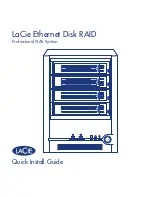
General
66
SIPxNano IP-PBX Getting Started Guide
6 • System
Call Detail Records (CDRs)
Call Detail Records capture information about calls handled by your SIPxNano ECS system. They can be used
for billing and cost accounting.
Figure 41. Call Detail Records (CDR)
The settings you can configure are:
•
Create CDRs Daily:
Schedule the call resolver to create CDRs daily. If you enable this setting, then you
should also enable call state event (CSE) logging for the forking proxy and authorization proxy, since CDRs
are created from CSEs. (Default =
unchecked
)
•
Log Forking Proxy Events:
Log forking proxy CSEs to the CDR database. (Default =
unchecked
).
•
Log Authorization Proxy Events:
Log authorization proxy CSEs to the CDR database.
(Default =
unchecked
).
•
Purge the CDR Database Daily:
Schedule a daily purge of the CDR database. Purge both CSEs and
CDRs. (Default =
checked
).
•
Purge Age for CDRs:
If daily purging is enabled, then remove CDRs older than this (in days).
(Default =
35
).
•
Purge Age for CSEs
(Advanced Setting)
:
If daily purging is enabled, then remove CSEs older than this (in
days). (Default =
7
).
•
Call Resolver Log Level:
Log level for the call resolver. The call resolver is the program that creates CDRs.
(Default =
NOTICE
).
•
Call Direction
(Advanced Setting)
:
Compute call direction. Call direction labels calls as incoming, outgo-
ing, or intranetwork based on whether the call came from a PSTN gateway, went to a PSTN gateway, or
neither, respectively. (Default =
unchecked
).
















































